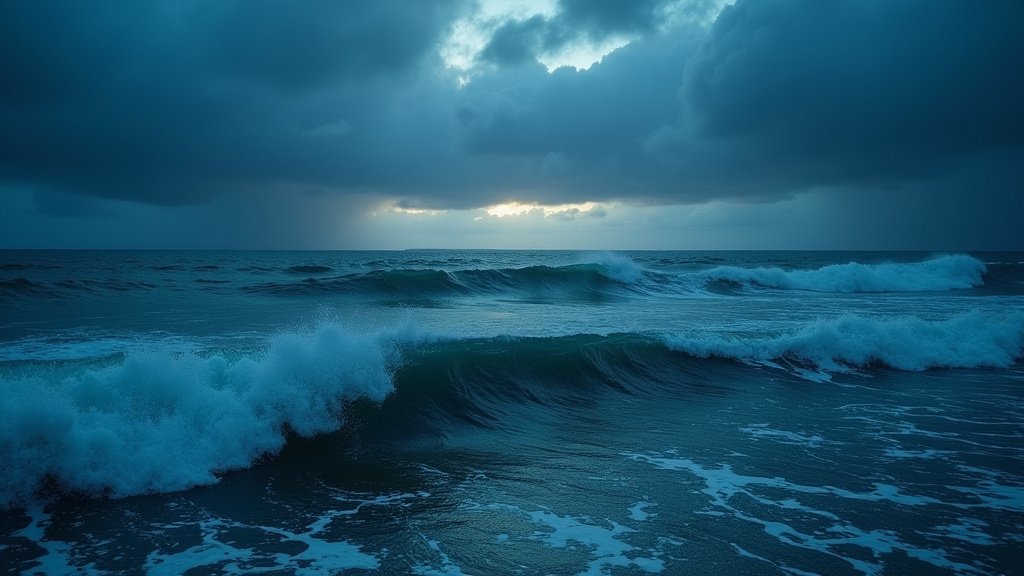A 5.9 magnitude earthquake struck off the coast of Oregon late Thursday night, sending a jolt through the Pacific Northwest and serving as a stark reminder of the region’s persistent seismic activity. The U.S. Geological Survey (USGS) confirmed the tremor occurred approximately 142 miles west of Bandon, Oregon, at a shallow depth of about 6 miles.
While no damage has been reported on land, and crucially, no tsunami threat was issued by authorities, the event has reignited discussions about the Pacific Northwest’s seismic vulnerability. Two minor aftershocks, both measuring around 3.0 magnitude, were detected by Friday morning, typical for an event of this size. This latest seismic news from Oregon highlights a well-documented pattern of offshore activity.
Frequent Tremors in a Seismically Active Zone
Earthquakes of magnitude 5 and greater are far from uncommon in the waters off the Oregon and Northern California coast. According to USGS data, over 160 such earthquakes have been detected in the region since January 2000. This frequency underscores the dynamic geological forces at play beneath the Pacific Ocean floor. This recent event follows closely on the heels of another notable tremor, a 5.8 magnitude earthquake that occurred just weeks ago, on September 8, 2025, southwest of Port Orford, Oregon. Such occurrences serve as consistent indicators of the ongoing geological processes shaping the West Coast.
The Looming Threat: The Cascadia Subduction Zone
The underlying geological structure that poses the most significant seismic risk to Oregon and the broader Pacific Northwest is the Cascadia Subduction Zone. This massive 700-mile-long fault system stretches from Northern California to British Columbia, lying offshore where the Juan de Fuca tectonic plate is sliding beneath the North American plate. This immense geological feature is capable of generating “megathrust” earthquakes, with magnitudes reaching 9.0 – events comparable to some of the most powerful ever recorded globally.
The Cascadia Subduction Zone has a history of producing such devastating earthquakes, with the last known great rupture occurring on January 26, 1700. Scientific evidence, including Japanese historical records of a tsunami that struck without a preceding local earthquake, points to a magnitude 9.0 event that profoundly impacted the coastline. Geologists estimate that these major subduction zone earthquakes occur, on average, every 300 to 600 years, though intervals have varied significantly in the past. This means that the region is, geologically speaking, overdue for another major event, with current forecasts indicating a significant probability of a large earthquake within the next 50 years.
Implications and the Imperative of Preparedness
The recent 5.9 magnitude offshore earthquake, while not a catastrophic event itself, serves as a critical call to action for residents of Oregon and surrounding areas. The potential for a future magnitude 9.0 Cascadia earthquake and its accompanying tsunami carries immense implications. Economic losses are projected to be in the tens of billions of dollars, with thousands of fatalities and widespread displacement anticipated.
This ongoing seismic news reinforces the critical need for robust preparedness measures. Officials emphasize the importance of practicing the “Drop, Cover, and Hold On” technique during earthquakes, securing heavy objects in homes, and creating comprehensive family emergency plans. A key aspect of preparedness involves having essential supplies, such as a two-week supply of food and water, and being informed about local emergency alerts and tsunami evacuation routes. Given that local tsunamis can arrive minutes after an offshore earthquake, residents in coastal areas are strongly advised to move inland and to higher ground immediately after strong shaking stops, without waiting for an official warning.
Navigating the Risk
The earthquake detected off the Oregon coast on Thursday night is a significant event that underscores the active geological environment of the Pacific Northwest. While this particular tremor posed no immediate danger in terms of damage or tsunami, it reiterates the persistent threat posed by the Cascadia Subduction Zone. For the residents of Oregon, staying informed, prepared, and vigilant is not just prudent advice – it is a vital necessity in living within one of the world’s most seismically active regions. The news from the coast serves as a timely impetus for communities and individuals alike to review and enhance their emergency readiness.




